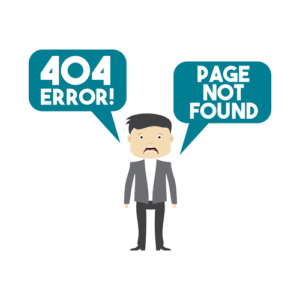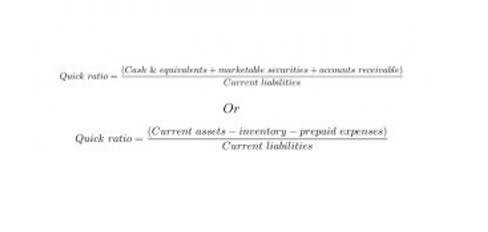
The working capital cycle includes more accounts, but the cash conversion cycle includes the largest account balances in working capital. Most companies use the cash conversion cycle because accounts receivable, inventory, and accounts payable are the largest portion of working capital. The cash conversion cycle is important because it helps businesses measure operational efficiency. By understanding the CCC and taking action to improve on the factors involved, business owners can avoid taking on additional debt or issuing stock to improve liquidity. Investors should take note of both the amount and age of accounts payable, as these are key indicators of a company’s liquidity and ability to pay its bills. Companies that are not able to keep up with payments on time may experience cash flow issues in the future, which can lead to serious financial issues.
How to Calculate the Cash Conversion Cycle for Target and Costco
The goal is to reduce the speed at which raw materials, goods, and services are moved through the cycle. Negotiating longer payment terms will allow them to keep money in their pockets for a longer period of time. Additionally, investing in inventory management software can help minimize stock levels and reduce cycle time while streamlining overall operations. Analyzing the Cash Conversion Cycle can reveal any issues with the company’s operations. Investors can understand where potential issues are arising and what they need to focus on in order to improve the company’s performance. For example, if a company’s QuickBooks DSO is higher than the industry standard, investors can determine whether the company should implement better collection processes or invest in more efficient payment processing.
How to Shorten Your Cash Conversion Cycle (Sustainably)
We will also provide real-world examples of how the CCC is used in different industries, and strategies for improving your company’s CCC. In addition, comparing the cycle of a company to its competitors can help with determining whether the company’s cash conversion cycle is “normal” compared to industry competitors. Without accurate, real-time data close at hand, it’s hard to see how small adjustments today can help you improve your cash conversion cycle for the long term. So if your company had a cash conversion cycle of 45 days in 2019, that measurement wouldn’t tell you if it’s good or not on its own.
Evaluating your cash conversion cycle

Optimizing your CCC can boost your liquidity, solvency, and growth potential, which can ultimately improve your business performance and financial health. CCCs that are high relative to the industry benchmark indicate that a larger proportion of the company’s cash is tied up in its operations. For instance, the company might hold inventory in its storage facilities for an extensive duration before those items are sold.

Analyzing the Cash Conversion Cycle
- Also known as a net operating cycle or simply cash cycle, CCC determines how long a net input dollar stays non-liquid from production to sale before it is received as cash.
- One of the main aims of cash management is to run the company with as little cash as possible tied up in inventory or accounts receivable.
- The first part of the formula, days inventory outstanding (DIO), measures the number of days a company takes to convert its inventory into sales.
- By understanding its components and taking steps to optimize them, businesses can enhance their financial performance and ensure a healthy cash position.
However, what constitutes a “good” cycle varies by industry and company objectives. The third stage includes the cash the company owes its current suppliers for the inventory and goods it purchases, and the period in which it must pay off those obligations. This figure is calculated using the days payable outstanding (DPO), which considers accounts payable. Negotiating favorable payment terms with the suppliers, which can allow the business to extend the payment period or defer the payment until the goods are sold or used. For example, a business may negotiate with its suppliers to pay within 60 days instead of 30 days, or to pay only after the goods are delivered or accepted. The CCC can vary depending on the industry, the business model, the seasonality, and the efficiency of the company.
- The cash conversion cycle (CCC) is a great metric to assess how well you manage cash.
- In general, you need effective dunning (collections) procedures, and the absence of slippage for certain customers.
- Financial inclusion represents the pursuit of making financial services accessible at affordable…
- A positive CCC indicates that the company’s cash outflows occur before the cash inflows, indicating a longer cash conversion cycle.
- A shorter CCC implies that a company can generate cash more quickly, enhancing its financial stability and flexibility.
- This means that the company may have to offer discounts or sell the inventory at a loss.
Credit Risk Management
- The HighRadius Order to Cash Suite automates credit management, collections, invoicing, cash application and dispute resolution, leading to faster revenue realization and improved cash flow.
- Regularly reviewing cash flow projections helps businesses adapt quickly to changes in consumer behavior, seize new opportunities, and mitigate risks.
- Don’t worry because all of this is already inside our smart cash conversion cycle calculator.
- Thank you for reading this blog post and I hope you found it useful and informative.
- Designed to streamline workflows and enhance the customer journey, HighRadius’s O2C solutions drive financial performance, reducing DSO by an impressive 20%.
- In this blog post, we will cover the cash conversion cycle in detail, including its formula and calculation.
By doing so, you can improve your cash inflow, reduce your bad debts, and increase your customer satisfaction. As we can see, Business B has a higher CFO, profit margin, inventory turnover, accounts receivable turnover, and accounts payable turnover than Business A, as well as a lower debt-to-equity ratio. This means that Business B has more cash to pay its current and long-term obligations, more profits to reinvest in its business, and more efficiency in managing its inventory and receivables.
- Ultimately, businesses need to balance their CCC and current ratio to ensure that they have enough liquidity to meet their short-term obligations while also investing in growth opportunities.
- Although the average payment terms on invoices are 30 days, this DSO shows that the agreed payment dates are being met fairly well.
- Nothing on this website should be construed as legal, tax, investment, financial, medical, or other professional advice.
- It noted that this increase is largely due to increases in inventory and extensions in payment collection, which were driven by market and regulatory changes.
- For example, a company in a capital-intensive industry may have a lower current ratio due to the high cost of its assets.
Cash Conversion Cycle and Current Ratio Optimization
To improve DIO, you can implement strategies such as better inventory management, efficient supply chain management, and better inventory forecasting. JIT involves maintaining minimal inventory levels and ordering supplies just when needed, reducing the duration that cash is tied up in inventory. Additionally, using the benefits of ERP systems to track and analyze inventory data can help identify slow-moving items and prevent overstocking. This step, when executed properly, can cash conversion cycle significantly reduce the cash conversion cycle and improve your company’s cash flow.

Payments
Generally, a lower CCC is considered better as it indicates efficient management of working https://lindaargila.com/governmental-accounting-wikipedia/ capital. However, the appropriate target CCC varies by industry, and businesses should aim to improve their CCC over time. The cash conversion cycle should be compared to companies operating in the same industry and conducted on a trend. For example, measuring a company’s conversion cycle to its cycles in previous years can help with gauging whether its working capital management is deteriorating or improving. A company’s cash conversion cycle broadly moves through three distinct stages and draws the following information from a company’s financial statements.

The longer a company is able to delay payment (without harming vendor relations), the better the company’s working-capital position. Static measures of liquidity, however, punish the company for maintaining larger accounts payable balances, as illustrated in the earlier example. Managing accounts payable effectively eases cash flow problems from these expenditures. By carefully timing supplier payments and optimizing inventory turnover, energy companies can improve liquidity, stabilize operations, and better handle market fluctuations and pricing pressures. They represent the amount of time it takes for your customers to pay you for your sales.
